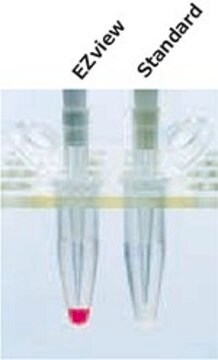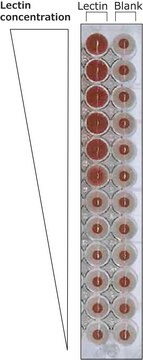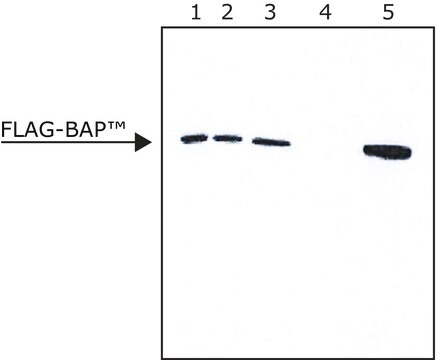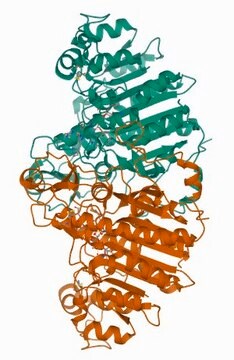M8823
Anti-FLAG® M2 Magnetic Beads
affinity isolated antibody
Synonym(s):
Monoclonal ANTI-FLAG® M2 antibody produced in mouse, FLAG® magnetic affinity resin, FLAG® resin for high throughput, Flag® Affinity resin, Anti-ddddk, Anti-dykddddk
About This Item
Recommended Products
conjugate
magnetic beads
antibody form
affinity isolated antibody
antibody product type
primary antibodies
clone
M2, monoclonal
form
suspension
shelf life
2 yr at -20 °C
analyte chemical class(es)
proteins
technique(s)
affinity chromatography: suitable
immunoprecipitation (IP): suitable
bead size
20-75 μm
matrix
superparamagnetic iron impregnated 4% agarose bead, with an average diameter of 50 μm.
isotype
IgG1
capacity
≥0.6 mg/mL binding capacity
shipped in
wet ice
storage temp.
−20°C
Looking for similar products? Visit Product Comparison Guide
General description
Application
Elution - FLAG® peptide, Glycine, pH 3.5, 3x FLAG® peptide
Learn more product details in our FLAG® application portal.
Features and Benefits
- Very rapid separation
- Significantly accelerated manipulations, such as repetitive washings
- Processing of multiple samples performed in plate formats
This leads to:
- Faster experimentation
- Better reproducibility
- More accurate quantitation of the proteins of interest
Physical form
Legal Information
Disclaimer
Not finding the right product?
Try our Product Selector Tool.
related product
Storage Class Code
12 - Non Combustible Liquids
WGK
WGK 1
Flash Point(F)
Not applicable
Flash Point(C)
Not applicable
Personal Protective Equipment
Certificates of Analysis (COA)
Search for Certificates of Analysis (COA) by entering the products Lot/Batch Number. Lot and Batch Numbers can be found on a product’s label following the words ‘Lot’ or ‘Batch’.
Already Own This Product?
Find documentation for the products that you have recently purchased in the Document Library.
Customers Also Viewed
Articles
Comparison of elution techniques for small-scale protein purification of FLAG® tag proteins using anti-FLAG® M2 magnetic beads.
Related Content
Protein purification techniques, reagents, and protocols for purifying recombinant proteins using methods including, ion-exchange, size-exclusion, and protein affinity chromatography.
Protein expression technologies for expressing recombinant proteins in E. coli, insect, yeast, and mammalian expression systems for fundamental research and the support of therapeutics and vaccine production.
Our team of scientists has experience in all areas of research including Life Science, Material Science, Chemical Synthesis, Chromatography, Analytical and many others.
Contact Technical Service














